Owning a jet boat brings thrilling adventures on the water, but it’s important to protect your investment during transport. When shipping your jet boat from one location to another, understanding what insurance covers can save you from potential financial stress if something goes wrong. Many boat owners don’t realize that their regular boat insurance policy might not fully cover transportation.
Your jet boat shipping insurance typically covers damage from accidents, theft, and environmental factors that occur during the transportation process. Coverage options vary depending on your insurance provider and specific policy details.
Liability coverage during transit
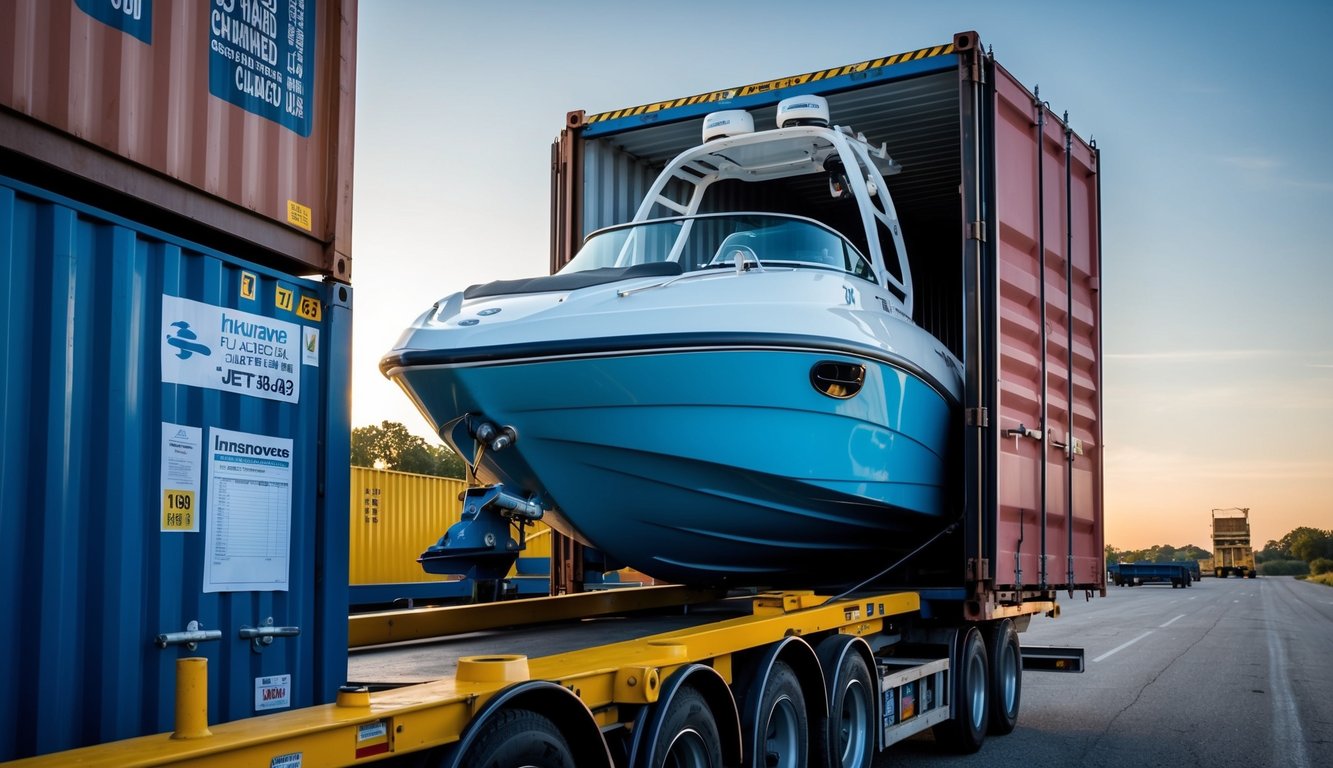
- When shipping your jet boat, liability coverage during transit is crucial. This type of insurance protects you if your boat causes injury to others or damages their property while being transported.
- Most boat insurance policies include bodily injury liability that covers you if you’re liable for injuring others during transportation. This can help pay for medical expenses and legal fees if someone is hurt.
- Similarly, property damage liability provides protection if your jet boat damages someone else’s property during shipping. This might include damage to other vehicles, structures, or personal belongings.
- Transit liability coverage is especially important when using professional transporters. Even though shipping companies typically have their own insurance, their coverage might not fully protect your interests.
- You should verify that your marine insurance policy specifically covers transit situations. Some policies might exclude certain transportation methods or require additional endorsements.
- If your boat causes environmental damage during transit, such as fuel spills, pollution liability coverage can help cover containment and cleanup costs.
Coverage for damage from mishandling
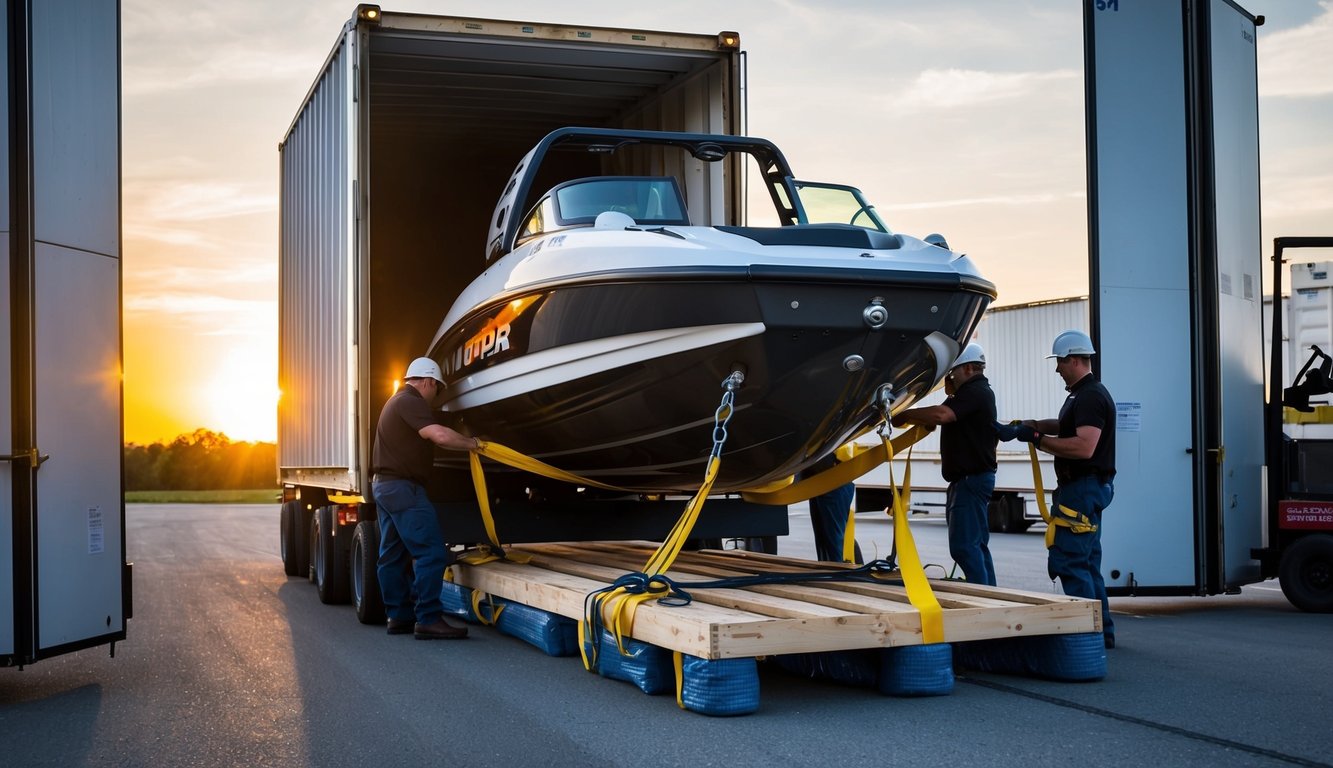
- When shipping your jet boat, insurance can protect you against damage caused by improper handling during transport. This coverage applies when your boat suffers harm due to negligence or mistakes by the shipping company or their workers.
- Most boat insurance policies with physical damage coverage will address damages from mishandling during shipping. This includes scratches, dents, or structural damage that occurs when your boat is being loaded, secured, or unloaded.
- If your jet boat gets dropped during lifting operations, insurance can cover the repairs. The same applies if it’s improperly secured and shifts during transport, causing damage to the hull or other components.
- Your policy might also cover damage from collisions during transport, such as if the shipping truck or vessel hits something while carrying your boat.
- Keep in mind that proper documentation is essential. Take photos of your jet boat before shipping and report any damage immediately upon arrival.
- Check if your policy includes property damage liability as this can provide extra protection. Some shipping companies may require proof of insurance before they’ll transport your jet boat.
Protection against theft during shipping
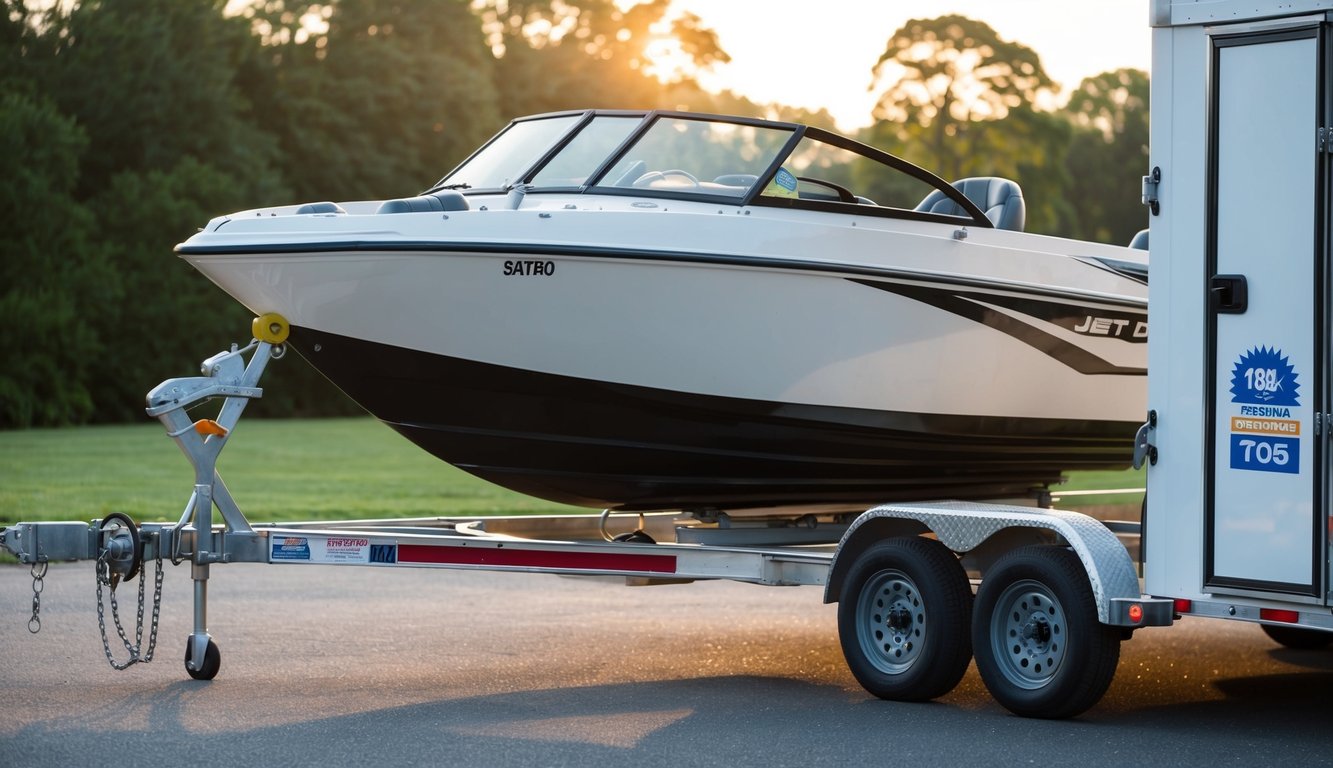
- When shipping your jet boat, theft protection is a crucial consideration. Most boat insurance policies with comprehensive coverage can protect against theft, even during transportation.
- Your standard boat insurance may cover theft while in transit, but it’s important to verify the specific terms. Comprehensive coverage typically pays to replace a stolen watercraft during shipping, though you’ll still need to pay your deductible.
- Physical security measures are equally important during shipping. Using tongue locks with cable locks for spares can deter thieves. Covering your boat with a shipping cover not only protects from damage but also conceals valuable components.
- Some specialized marine insurance policies offer enhanced protection specifically for transit situations. These policies may cover theft of both the boat and trailer during the shipping process.
- Before shipping, document your boat’s condition with photos and keep an inventory of all equipment. This documentation will prove invaluable if you need to file a theft claim with your insurance company.
- Remember to check if your shipping company provides any theft protection coverage. Some professional boat transporters offer additional insurance options that can supplement your existing policy.
Coverage for accidental fuel spills
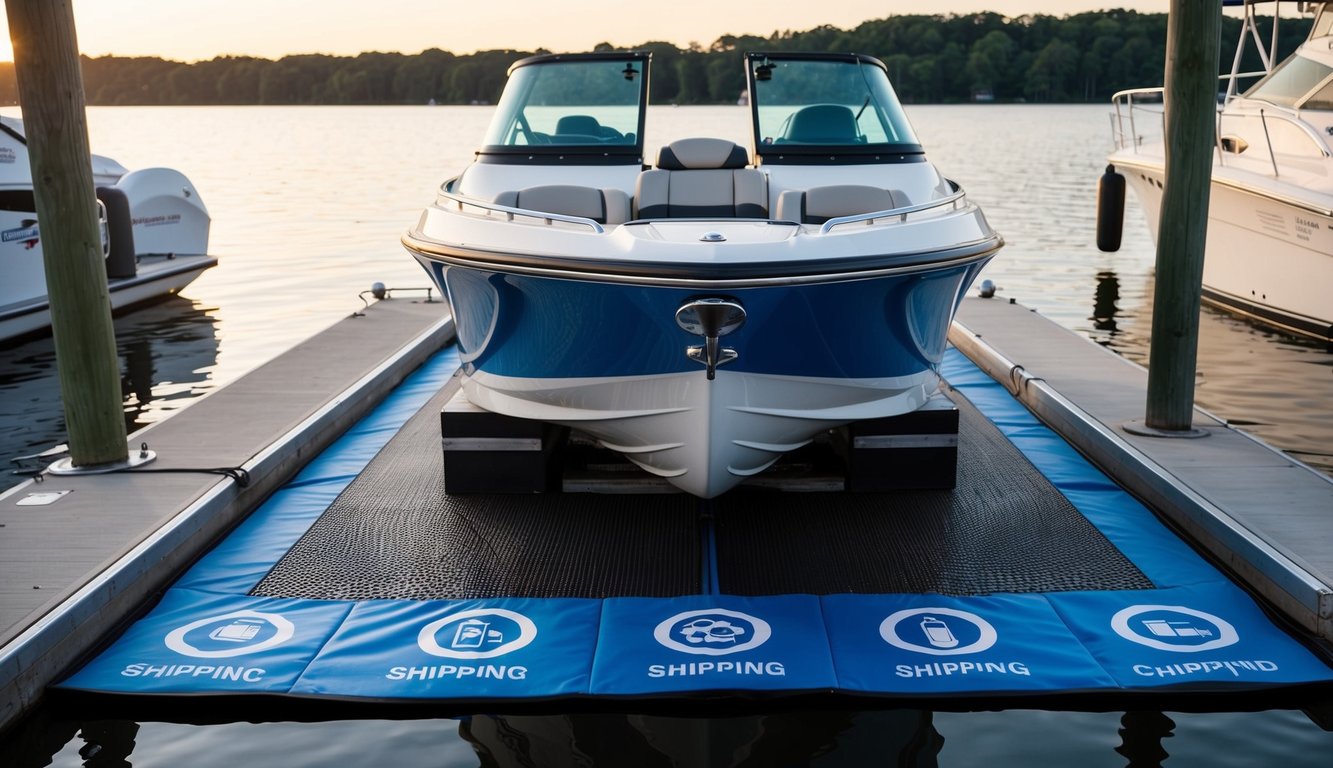
- Fuel spill protection is a crucial part of boat insurance that many owners overlook. If your jet boat accidentally leaks or spills fuel, you could face significant cleanup costs and liability issues.
- Most comprehensive boat insurance policies include some level of fuel spill liability coverage. This protection helps pay for cleanup efforts and environmental damage if your jet boat causes a fuel spill.
- The best policies can provide coverage up to $939,800 for fuel-spill liability, which is typically the maximum amount for which you can be held responsible. This specific coverage is often separate from your general liability protection.
- Your fuel spill coverage typically applies regardless of how the spill occurred. Whether it’s from a sunken boat, leaking tank, or an accident at the fueling station, you’re generally protected up to your policy limits.
- When shopping for jet boat insurance, look specifically for fuel spill coverage in your policy documents. Some providers like Boat U.S. offer substantial protection specifically for this risk.
- Remember that fuel spill coverage may be included in your standard policy or offered as an optional add-on depending on your insurance provider.
Insurance for Weather-related Damages
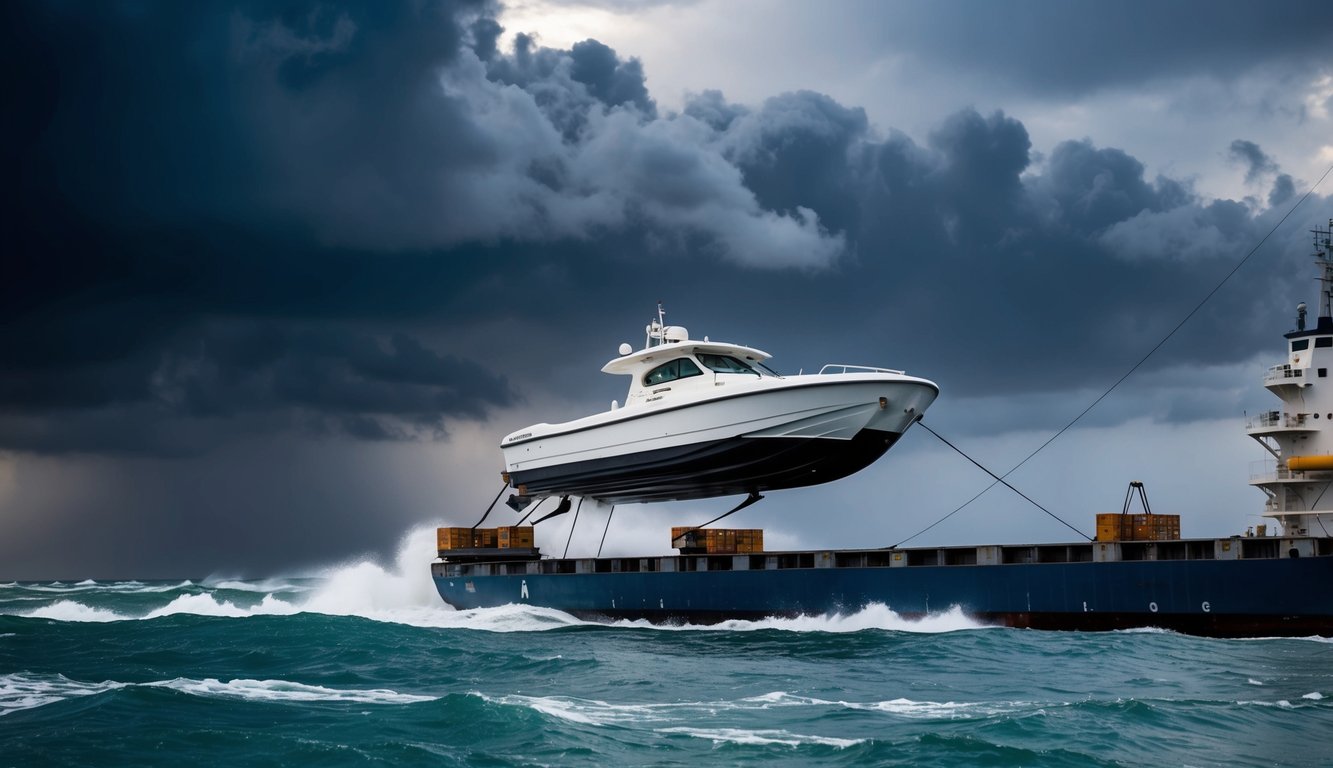
- When shipping your jet boat, weather-related damages are a significant concern. Most boat insurance policies include coverage for damage caused by storms, wind, hail, and lightning while your boat is being transported.
- Comprehensive boat insurance typically pays for repairs to your boat that result from weather-related perils during transport. This can include damage from sudden storms, heavy rainfall, or even snow and ice depending on your policy.
- You should verify that your policy specifically covers your jet boat while it’s in transit. Some policies might have different terms for boats being transported versus those in water.
- Mercury boat insurance and similar carriers generally provide protection against storm damage during shipping. This includes coverage for wind damage, hail damage, and other weather events.
- Be aware that insurance companies may require certain precautions when shipping your jet boat. This could include proper securing methods and approved coverings to protect against weather.
- Your policy may have specific limits for weather-related claims. Check your coverage limits to ensure they match the value of your jet boat and potential repair costs.
Compensation for loss in transit

- When shipping your jet boat, full compensation for loss is a crucial aspect of your insurance coverage. Insurance policies typically cover the total value of your boat if it’s lost during transport.
- The amount you receive depends on your policy’s declared value and any depreciation factors. Most marine goods in transit insurance policies offer protection against physical loss of your vessel while it’s being moved.
- You should verify that your policy includes replacement cost rather than actual cash value. Replacement cost gives you enough money to buy a new boat of similar quality and features.
- Many policies have deductibles that will reduce your compensation amount. These typically range from 1-5% of your boat’s insured value.
- Your insurance may also provide coverage for your boat while it’s on the trailer during transport. This is important since many losses occur during the loading and unloading process.
- Documentation is essential for successful claims. Take photos of your jet boat before shipping and keep all transport paperwork. This evidence helps ensure you receive proper compensation if your boat is lost.
Protection against fire damage

- Fire can cause serious damage to your jet boat while in transit. Luckily, most boat insurance policies include protection against fire damage as part of their standard coverage.
- When shipping your jet boat, insurance typically covers losses from fires that might start during transportation. This includes fires caused by electrical issues, fuel leaks, or external sources.
- Your insurance policy will generally pay for repairs or even total replacement if fire renders your boat unusable. The coverage protects against damage caused by fire as one of the common risks insured.
- Most comprehensive boat insurance plans specifically list fire as a covered peril. This gives you peace of mind when shipping your valuable vessel.
- Before shipping your jet boat, check that your policy explicitly mentions fire protection in its terms. This ensures you’re fully covered against this risk.
- You should document your boat’s condition prior to shipping with photos and videos. This evidence will help support any fire-related claims if needed.
- Remember that insurance companies may have specific requirements for how your boat should be prepared for shipping to maintain fire protection coverage.
Coverage for dock-related incidents

- When shipping a jet boat, your boat insurance can protect you from dock-related accidents and damages. Most boat insurance policies include liability coverage for damage to docks and pilings that might occur during loading or unloading.
- If your jet boat accidentally collides with a dock during the shipping process, collision coverage typically helps pay for repairs, minus your deductible. This protection is essential since dock repairs can be costly.
- Your policy may also cover incidents where your boat damages someone else’s property at the marina. This includes situations where your jet boat might damage other boats or structures during transportation.
- Some insurance policies specifically include coverage for accidents involving docks or other boaters. This protection can save you from significant out-of-pocket expenses.
- When preparing to ship your jet boat, check if your policy includes fuel spill liability. This covers cleanup costs if fuel leaks while docking or during the shipping process.
- Remember to review your policy details carefully. Coverage limits and deductibles vary between providers, and you want to ensure you have adequate protection for all potential dock-related incidents.
Insurance for Collision During Shipping
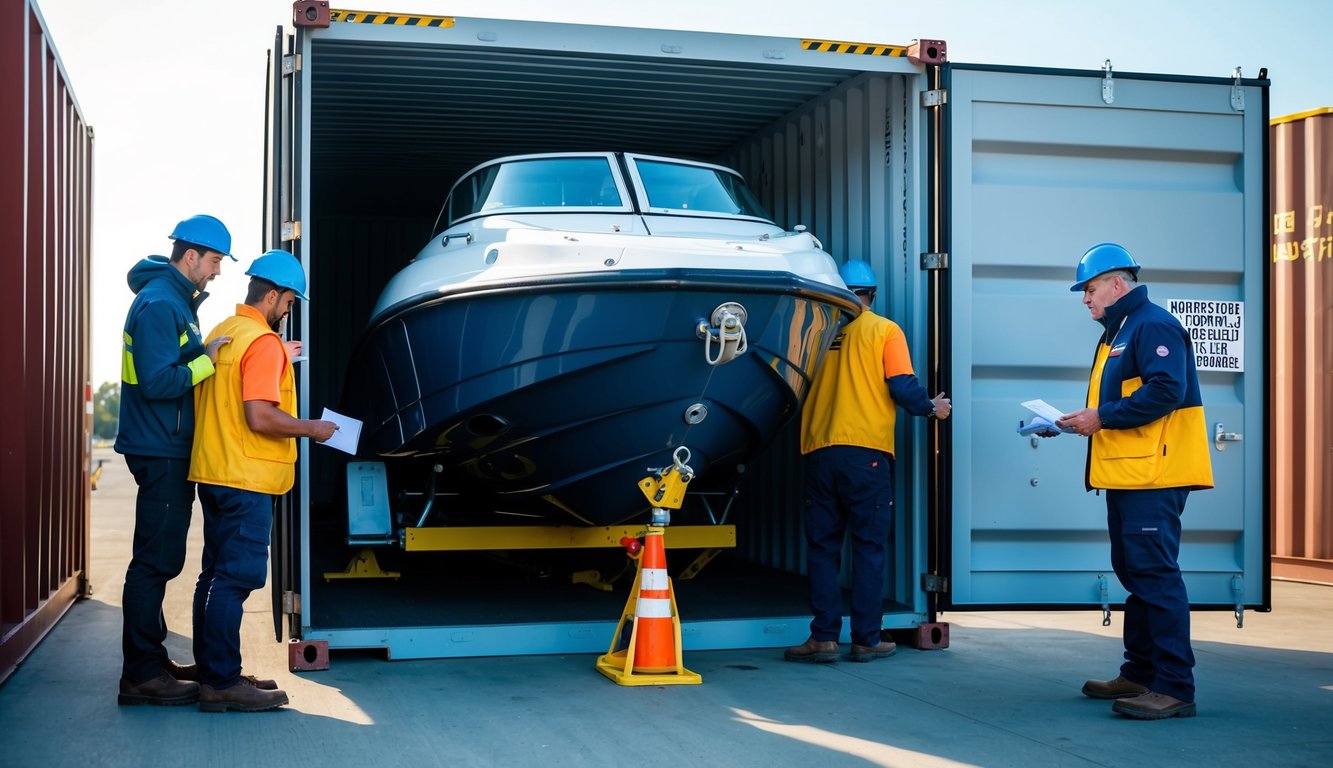
- When shipping your jet boat, collision coverage is an essential part of your insurance plan. This protection helps pay for damage if your boat hits an object, dock, or another vessel during transport.
- Most standard boat insurance policies include collision coverage that applies during shipping. This coverage typically kicks in after you pay your deductible amount.
- You should verify that your current boat insurance extends to transportation scenarios. Some policies might have limitations or exclusions when your boat is being moved by a trucking company.
- Transportation companies often carry their own boat shipping insurance. Ask the shipping company about their coverage limits and whether they’re responsible for collision damage during transit.
- Your policy might also include personal liability coverage that protects you if your boat damages other property during shipping. This could cover damage to other vehicles or structures.
- Before shipping, document your boat’s condition with photos. This documentation helps with potential claims if collision damage occurs during transport.
- Check if your policy covers the full replacement value of your jet boat. Some insurers only cover the actual cash value, which factors in depreciation.
Protection against equipment damage

- When shipping a jet boat, insurance can protect your expensive equipment from damage. Most boat insurance policies include options for equipment coverage during transport.
- Comprehensive coverage protects your watercraft against various damages including theft, vandalism, fire, and explosions. This extends to your boat’s equipment during shipping.
- Your insurance can cover carry-on items and mechanical components that might get damaged in transit. This includes electronics, navigation systems, and other valuable accessories installed on your jet boat.
- Make sure your policy specifically mentions equipment protection during transport. Some basic policies might only cover the hull and motor without addressing specialized equipment.
- You can often personalize your boat insurance to include additional coverage for carry-on items that might be at risk during shipping. This customization helps ensure nothing falls through coverage gaps.
- Document all equipment before shipping by taking photos and keeping receipts. This documentation will help if you need to file a claim for damaged equipment after transport.
- Check your deductible amount for equipment claims. Higher deductibles typically mean lower premiums, but you’ll pay more out-of-pocket if equipment is damaged during shipping.





I do consider all of the concepts you’ve offered to your post.
They’re really convincing and will definitely work. Still, the posts are very quick for beginners.
Could you please extend them a little from next time?
Thanks for the post.